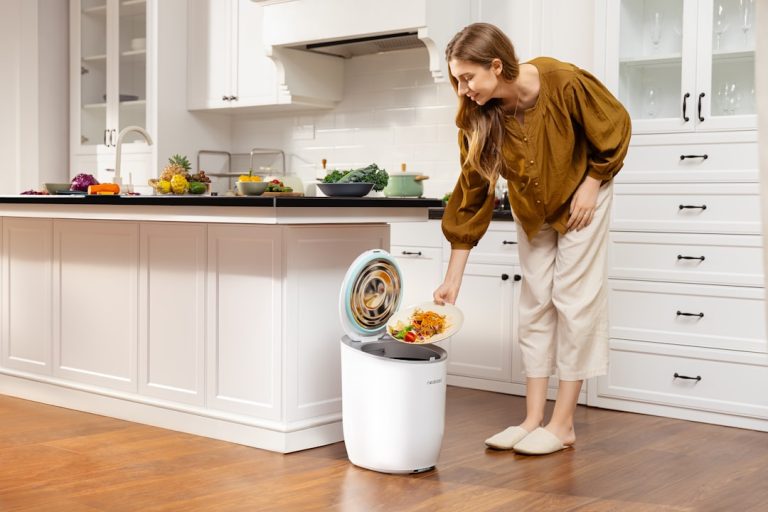How I Find Sustainable Alternatives to Fast Fashion Brands.
How I Find Sustainable Alternatives to Fast Fashion Brands
The allure of fast fashion is undeniable: trendy pieces at unbelievably low prices, updated weekly, sometimes even daily. For years, I fell prey to its siren song, filling my closet with items that barely lasted a season. But as I started to understand the true cost behind those cheap garments – the environmental devastation, the exploitation of garment workers, the mountains of textile waste – I knew I had to change. This wasn’t just about my wardrobe; it was about aligning my values with my purchasing power. The journey from a fast fashion consumer to someone who actively seeks out sustainable alternatives wasn’t an overnight switch, but a methodical, evolving process. And today, I want to share exactly how I navigate this complex landscape to find brands and practices that truly make a difference.
My Initial Wake-Up Call: Why I Ditched Fast Fashion
My shift didn’t come from a sudden epiphany, but a slow, growing discomfort. It began with documentaries exposing the harsh realities of garment factories and the shocking statistics on clothing waste piling up in landfills. I started noticing how quickly my cheap purchases would fray, pill, or lose their shape, turning into disposable items after just a few wears. The constant pressure to buy new, to keep up with fleeting trends, felt exhausting and wasteful. This realization solidified my resolve: I wanted a wardrobe that reflected a deeper commitment to people and the planet, not just fleeting trends. But simply wanting to change wasn’t enough; I needed a strategy.
Decoding the Labels: My Strategy for Vetting Materials and Certifications
The first step in my quest for sustainable alternatives always begins with understanding what a garment is made of. I’ve learned that not all fabrics are created equal, and simply being “natural” doesn’t automatically mean “sustainable.” My approach involves a two-pronged attack: scrutinizing material composition and verifying credible certifications.
Prioritizing Planet-Friendly Fibers
When I pick up a garment, the material tag is my first point of inspection. I actively seek out natural fibers that are grown or produced with minimal environmental impact. Organic cotton, for instance, is a staple in my sustainable wardrobe because it’s grown without harmful pesticides and synthetic fertilizers, which protects soil health and water quality. Linen and hemp are also high on my list; they require less water and often fewer pesticides than conventional cotton, and their fibers are incredibly durable, promising a longer lifespan for the garment.
Beyond natural fibers, I also look for innovative materials that offer a better environmental footprint. Tencel (Lyocell) and Modal, derived from sustainably sourced wood pulp, are produced in a closed-loop system, meaning chemicals are recycled and reused, significantly reducing waste. Recycled materials, whether from post-consumer waste like plastic bottles (recycled polyester) or textile scraps (recycled cotton), are another excellent option, as they divert waste from landfills and reduce the demand for virgin resources. I’m always wary of conventional polyester and nylon unless they are explicitly stated as recycled, due to their reliance on fossil fuels and microplastic shedding.
Unpacking the Power of Certifications
Materials alone don’t tell the whole story. To truly understand a garment’s sustainability credentials, I delve into certifications. These third-party verifications are crucial because they offer an objective assessment of a brand’s claims, covering everything from environmental impact to fair labor practices throughout the supply chain. My go-to certifications include:

- Global Organic Textile Standard (GOTS): This is the gold standard for organic fibers, ensuring that a textile product is truly organic from harvesting of the raw materials, through environmentally and socially responsible manufacturing, up to labeling. If a garment has a GOTS label, I know it meets stringent ecological and social criteria. Learn more about GOTS.
- Oeko-Tex Standard 100: This certification guarantees that textiles are free from harmful substances, ensuring safety for both consumers and the environment. While it doesn’t cover organic farming or social conditions, it’s a vital indicator of chemical safety.
- Fair Trade Certified™: This certification focuses on social responsibility, ensuring fair wages, safe working conditions, and community development for farmers and factory workers. For me, ethical production is just as important as environmental impact.
- Bluesign®: This standard aims to eliminate harmful substances from the beginning of the manufacturing process, setting strict guidelines for environmentally friendly and safe production.
When I find a brand that prominently displays these certifications, it immediately earns a higher level of trust. It shows they’ve invested in transparency and external verification, which is a huge green flag in a market often plagued by greenwashing. I usually cross-reference these certifications on the certifying body’s website to ensure they are current and legitimate. This careful vetting process helps me confidently choose items that align with my values.
Beyond the Fabric: Unpacking a Brand’s True Ethical Footprint
Once I’ve assessed the materials and certifications, my next step is to look beyond the garment itself and investigate the brand’s overall ethical footprint. This is where the real detective work begins, as true sustainability encompasses more than just eco-friendly fabrics; it involves the entire supply chain, labor practices, and commitment to circularity.
Investigating Supply Chain Transparency and Labor Practices
A truly sustainable brand is transparent about its supply chain. I look for brands that openly share information about their factories, where their materials are sourced, and the conditions under which their garments are made. Websites like the Fashion Revolution’s Transparency Index are invaluable resources for this. I specifically seek out evidence of fair wages, safe working conditions, and the absence of child or forced labor. Brands that publish supplier lists, audit reports, or collaborate with organizations like Fair Wear Foundation signal a genuine commitment to social responsibility.
If a brand is vague about its production locations or labor policies, that raises a red flag for me. It suggests they might have something to hide. My goal is to support companies that respect their workers and contribute positively to the communities where they operate. This part of the research often takes the most time, but it’s crucial for ensuring I’m not inadvertently supporting exploitative practices.
Environmental Impact Beyond Materials
My investigation doesn’t stop at fabric choices. I also consider the brand’s broader environmental policies. How do they manage water usage in their dyeing and finishing processes? What steps are they taking to reduce their carbon footprint, from manufacturing to shipping? Do they have initiatives for waste reduction, such as recycling textile scraps or offering repair services? I look for brands that go beyond basic compliance and actively invest in innovative, greener technologies and practices.
Some brands even offer take-back programs or encourage customers to return old garments for recycling, contributing to a circular economy. These initiatives show a holistic approach to sustainability, acknowledging that a garment’s lifecycle extends far beyond its initial purchase. I often use resources like the






